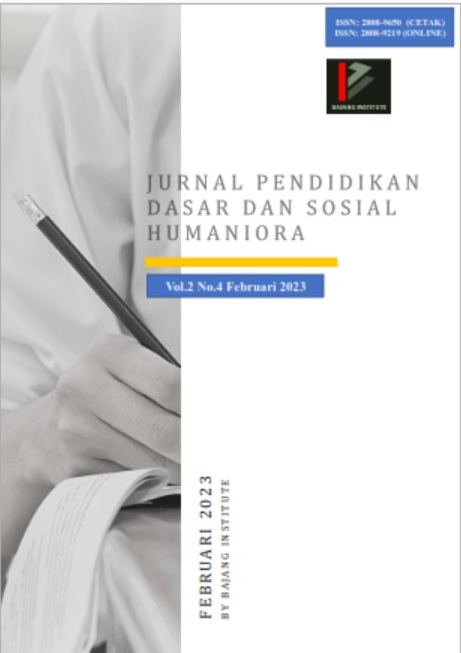NYENTANA: SISTEM PERKAWINAN SUKU BALI DI DESA URASO KECAMATAN MAPPEDECENG KABUPATEN LUWU UTARA
DOI:
https://doi.org/10.53625/jpdsh.v2i4.5044Keywords:
Nyentana, Marriage, Social StatusAbstract
The factors that led to the process of implementing the nyetana marriage in Uraso Village, namely: first, the naur sesangi factor (giving thanks by keeping promises); the two matchmaking factors; nyentana marriage which is the opposite of an ordinary marriage, nyentana marriage whose function is to continue as a successor in the woman's house where the obligations in the woman's house will be carried out by the man who carries out the nyentana marriage, and also the man can do his swadarma in the woman's house, where in matters of sanggah (place of worship at home) and pura (place of public worship) the main goal is also that later her wife's parents die she is obliged to carry out the cremation ceremony for both parents. In a nyentana marriage, the man who enters into the marriage does not have the right to inheritance where all inheritance is handed over to his wife and on behalf of his wife, in this case from the man who is nyentana, does not also have the right to custody of his child if there is a conflict in his household. . The position of men here does not have any rights if there is a divorce in a nyentana marriage.
References
S. Pujileksono, Pengantar Antropologi: Memahami Realitas Budaya. Malang: Intrans Publishing, 2017.
Y. Z. Abidin and B. A. Saebani, Pengantar Sistem Sosial Budaya Indonesia. Bandung: Pustaka Setia, 2014.
N. N. Rahmawati, “Budaya Bali dan Kedudukan Perempuan Setelah Menikah (Perspektif Hukum Waris Hindu),” Satya Dharma J. Ilmu Huk., vol. 4, no. 1, pp. 1–17, 2021.
I. P. W. M. Sujana, “Pelaksanaan perkawinan Nyentana dalam rangka mengajegkan sistem kekeluargaan patrilineal di Bali,” Widya Accarya, vol. 7, no. 1, 2017.
I. G. N. A. N. Diatmika, “Marriage System of Nyentana and Legal Consequences for Children born in it,” 2019.
I. G. A. A. P. Cahyania, R. F. Nasri, R. W. Pravitasari, and M. Fausta, “Hak Anak Laki-Laki yang Melangsungkan Perkawinan Nyentana,” Kanun J. Ilmu Huk., vol. 21, no. 2, pp. 295–312, 2019.
L. Mulyadi, “Interpretation of judges in representing the dynamics of religion of indigenous legal inheritance of Bali,” J. Huk. dan Peradil., vol. 8, no. 2, pp. 214–227, 2019.
I. G. P. D. Wiratama, I. K. Sukadana, and D. G. Sudibya, “Kedudukan Laki-Laki Nyentana pada Wanita yang Memiliki Saudara Laki-Laki di Desa Bantas Kabupaten Tabanan,” J. Konstr. Huk., vol. 1, no. 1, pp. 152–156, 2020.
I. N. Budiana and M. O. C. Wiguna, “Researching Social Change in Bali Indigenous Marriage Private,” Sociol. Jurisprud. J., vol. 4, no. 2, pp. 75–85, 2021.
I. W. B. Suta, I. N. P. Budiartha, and I. K. Sukadana, “Keabsahan Perkawinan Ngerorod (Kawin Lari) di desa Kelusa, Kabupaten Gianyar,” J. Interpret. Huk., vol. 2, no. 1, pp. 184–188, 2021.
N. P. Limarandani, A. Sihabudin, and M. Ronda, “Inter-Caste Marriage and the Impact on the Intracultural Communication Pattern of Balinese Hindu in Indonesia An Ethnography Study,” Asian Soc. Sci., vol. 15, no. 3, pp. 40–45, 2019.
I. G. Budasi and I. W. Suryasa, “The cultural view of North Bali community towards’ ngidih’marriage reflected from its lexicons,” J. Lang. Linguist. Stud., vol. 17, no. 3, pp. 1484–1497, 2021.
I. W. B. E. Pratama, N. N. D. R. P. Nandita, and N. N. I. Ratnasari, “Perkawinan Nyentana di Bali: Urgensi, Tata Cara, dan Prospeknya di Era Modern,” J. Huk. Lex Gen., vol. 2, no. 6, pp. 460–481, 2021.
I. W. Swandana and N. N. Mariadi, “Sistem perkawinan poligami di desa adat siakin kecamatan kintamani kabupaten bangli,” Kertha Widya, vol. 8, no. 1, pp. 97–117, 2021.
I. M. Suta, Sentana Rajeg & Perkawinan Nyentana Ditinjau dari Hukum Adat Bali. Badung: Nilacakra, 2022.
M. Y. Ikbar, Metode Penelitian Sosial Kualitatif. Bandung: Refika Aditama, 2012.
Afifuddin and B. A. Saebani, Metodologi Penelitian Kualitatif. Bandung: Pustaka Setia, 2012.












